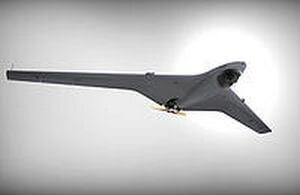Unmanned aircraft systems and aircraft operation operators Association of GEF 25.02 08 classification specialist functional subsystems

Unmanned aircraft systems (UAS) and unmanned aerial vehicles (UAVs) on the basis of robotic systems.
Unmanned aircraft systems (UAS) and unmanned aerial vehicles (UAVS) on the basis of robotic systems fastest growing in the world class aircraft.
Robotic complex UAV “Aerob 4D”
The advantages of UAV “Aerob 4D”
Description:
Unmanned aircraft systems (UAS) – the fastest growing worldwide class of aircraft.
Actually unmanned aircraft system includes an aircraft – unmanned aerial vehicle (UAV) and associated elements which are operated with no pilot on Board: unmanned aircraft system (apart from the UAV control, transport equipment, technical devices, forming channels of communication and transmission of information, the device information processing), and additional components, forming a connection between the different elements: technical personnel necessary software, integration with other systems, allowing you to consolidate multiple TANK system with a single management. Also the system should include the totality of the necessary technical and regulatory documentation.
Unmanned aerial vehicle (UAV, UAV) — aircraft without crew on Board. The UAV may have a different degree of autonomy — from remotely controlled to fully automatic, and also differ in structure, purpose and many other parameters.
Robotic complex UAV “Aerob 4D”:
Robotic complex UAV “Aerob 4D” is used as the basis of all available multi-purpose unmanned platform created for the purpose of aromatography, remote monitoring and remote sensing of the earth’s surface, the implementation of the service flying laboratory in problems of integration of innovative high-tech equipment in the UAV platform, the development of methods for Autonomous positioning and aiming, etc.

Complex “Aerob 4D” on the basis of UAV consists of the following main segments:
UAV “Aerob 4D”,
– ground control station (NPU),
– starting the device and accessories.
The advantages of UAV “Aerob 4D”:
– efficiency,
– high power,
– high margin,
– high stability of flight in the horizontal (up to 1 degree for roll and pitch 90% of the working trajectory),
– automated functional testing of UAV software andhardware means of NHRIs and on-Board equipment,
the visualization of electronic map of flight area in a given scale,
– preparation of the flight task,
– flight of the UAV with the terrain,
– launch of the UAV from unprepared sites with the use of the ejection device,
– UAV flight on a given route in automatic mode,
the reproduction, processing at FSL telemetry, video‐, IR‐ and fotograficascoy to information obtained from the payload of the UAV,
– registration and long-term storage of information in the NPU with the ability of further processing and analysis
– automatic return of the UAV to the desired spot by the operator or in case of emergency,
parachute landing the UAV by the operator or automatically in case of an emergency situation.
Specifications “Aerob 4D”:
| Features: | Value: |
| Maximum takeoff weight, kg | 30,0 |
| The range of operating altitudes above the terrain, m | 100 – 4500 |
| Ferry range, km | 1200 |
| Maximum range, km | up to 500 |
| The range for direct radio link, km | up to 80 |
| Duration of flight hours | to 12 |
| Overall dimensions (wingspan, length, height) (cm) | 360, 145, 44 |
| The diameter of the pusher propeller, m | 0,55 |
| Cruising speed, km/h | 80 – 150 |
| Maximum speed, km/h | 180 |
| Powerplant | engine internal combustion (aviation kerosene) |
| Payload mass with flight duration, kg: | |
| 12 hours | up to 5 kg |
| up to 2 hours | up to 12 kg |
| Base capacity of fuel tanks litres | 11 |
| The wind speed at the start, m/s | not more than 18 |
| The operating temperature range, oC | from – 40 to +50 |
| Start | ejection |
| Landing | parachute |
| Navigation | GPS/GLONASS |
| Embodiment of the complex | mobile |
Note: the description of technology in example Aerob 4D.



